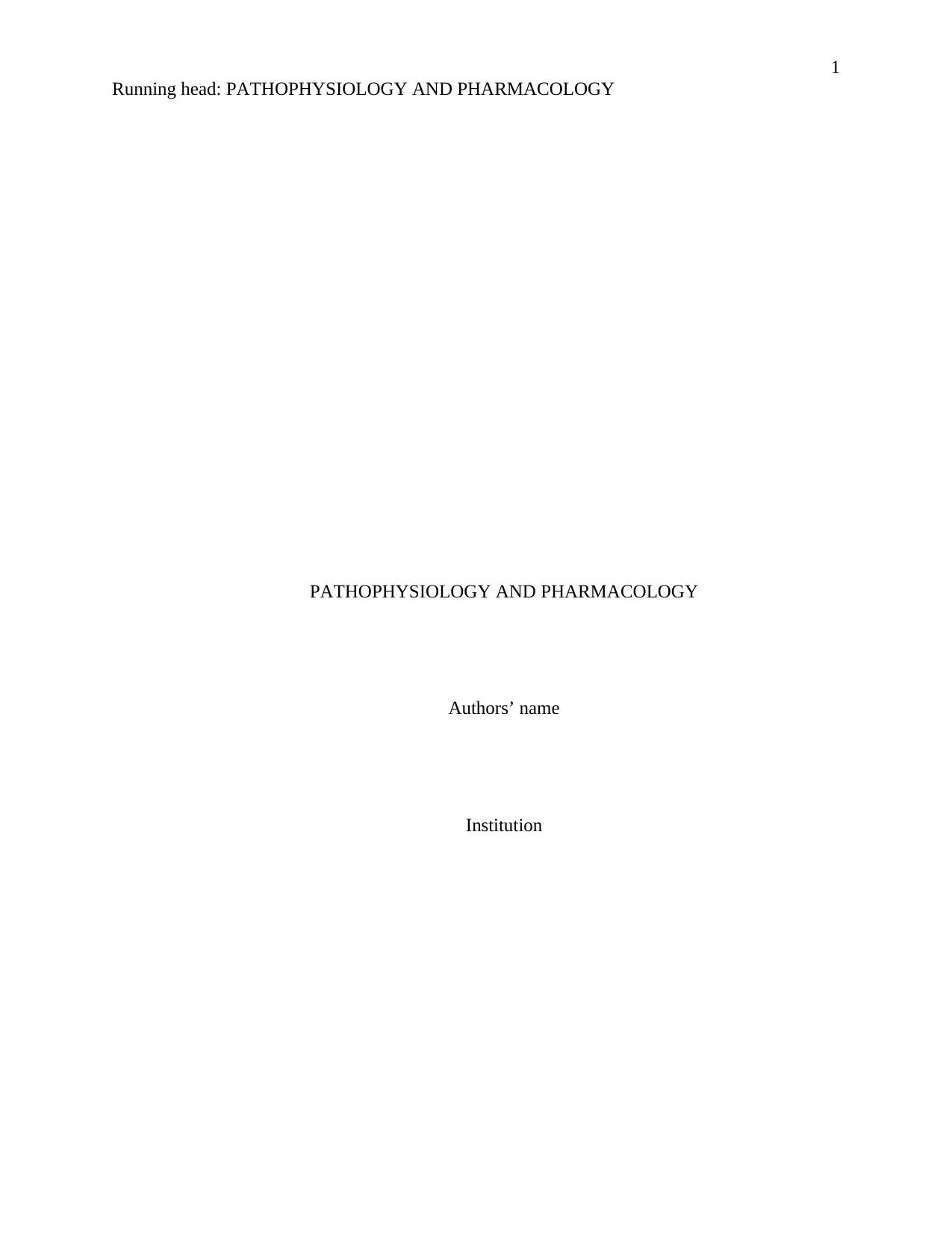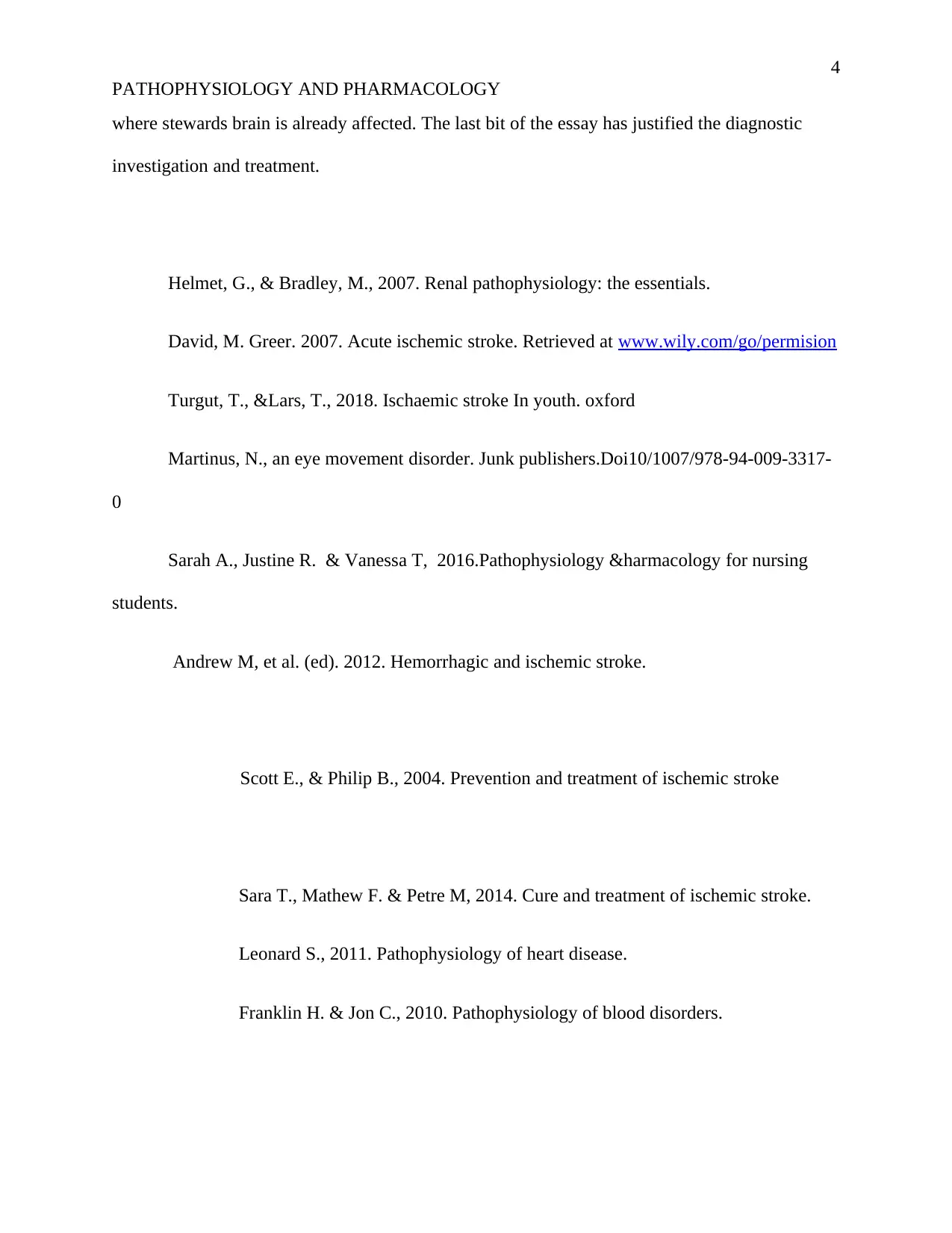Pathophysiology and Pharmacology: Ischemic Stroke Case Study Analysis
VerifiedAdded on 2023/01/18
|4
|956
|94
Report
AI Summary
This report provides an analysis of ischemic stroke, covering its pathophysiology and pharmacology based on a case study. It begins with an introduction to ischemic stroke, its prevalence, and risk factors such as atrial fibrillation and extracranial embolism. The report details the patient's presentation, including symptoms like right-sided facial drooping and gait issues, and links these to the underlying pathophysiology. It explores the cellular mechanisms involved, including cellular communication, and discusses the etiology and diagnostic investigations. Furthermore, the report examines the treatment modalities and prevention strategies for ischemic stroke, referencing relevant literature and research findings. It also discusses the importance of early diagnosis and the impact of age and genetics on stroke risk. The report concludes by summarizing the key elements of the case, highlighting the importance of understanding pathophysiology in clinical practice.
1 out of 4





![[object Object]](/_next/static/media/star-bottom.7253800d.svg)